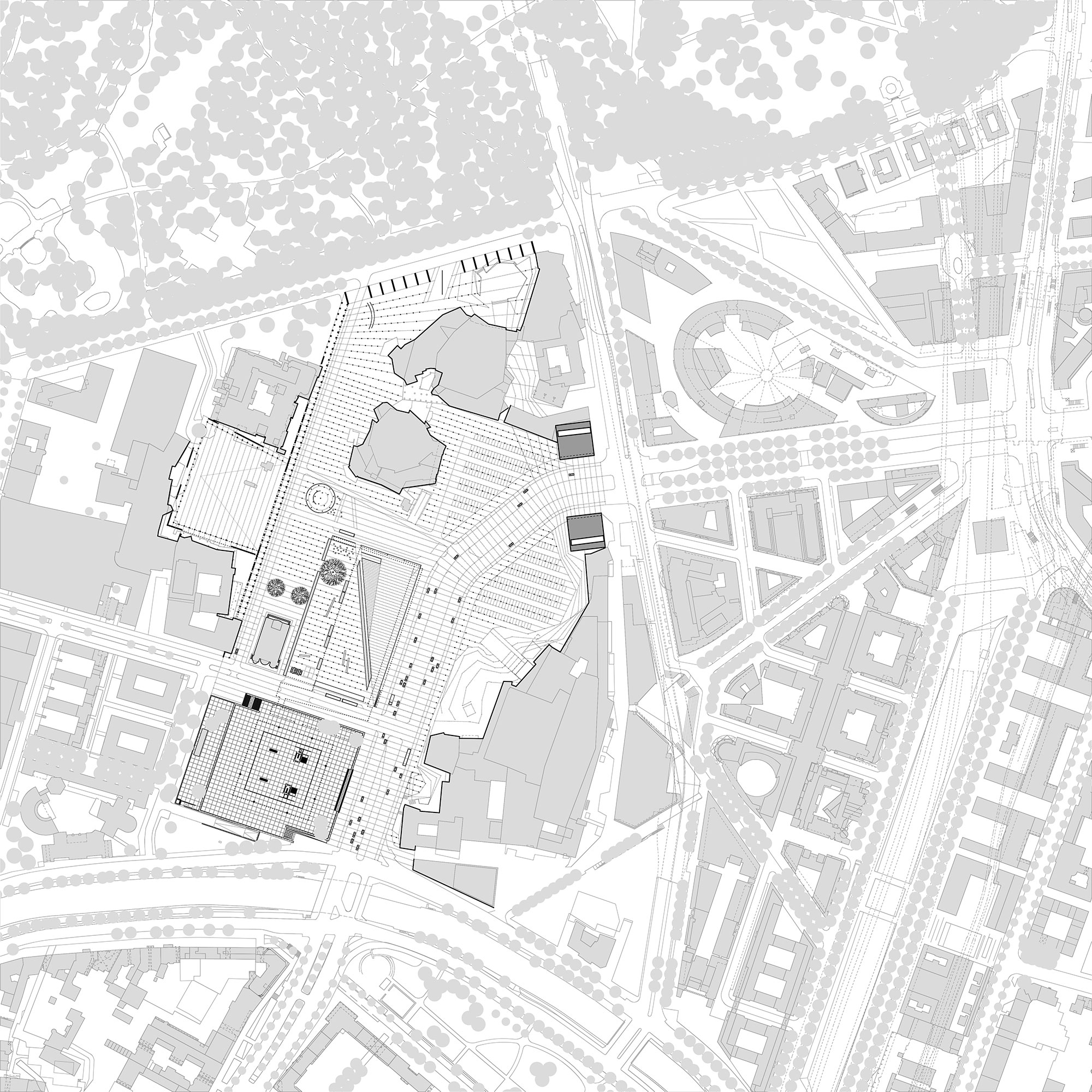
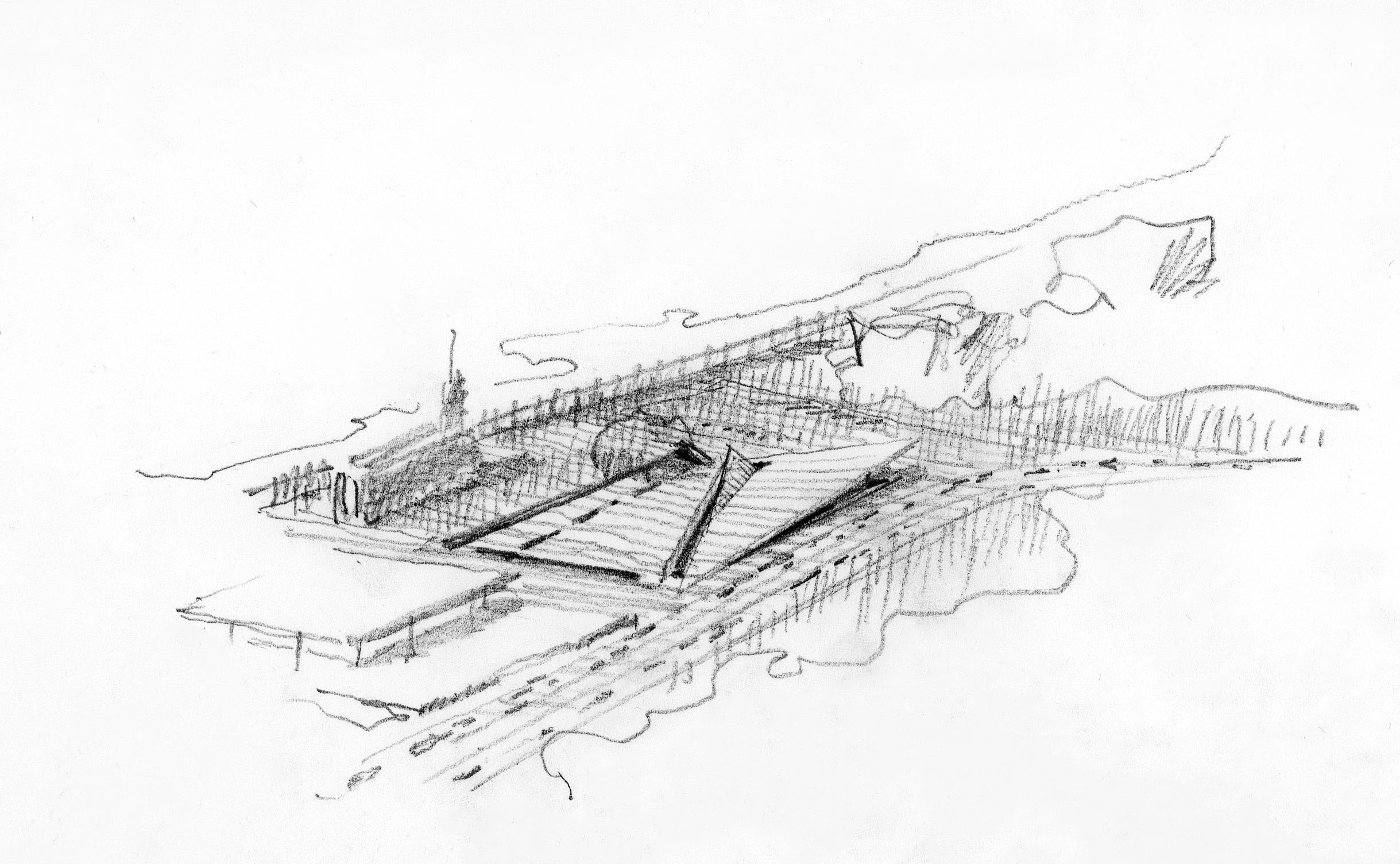
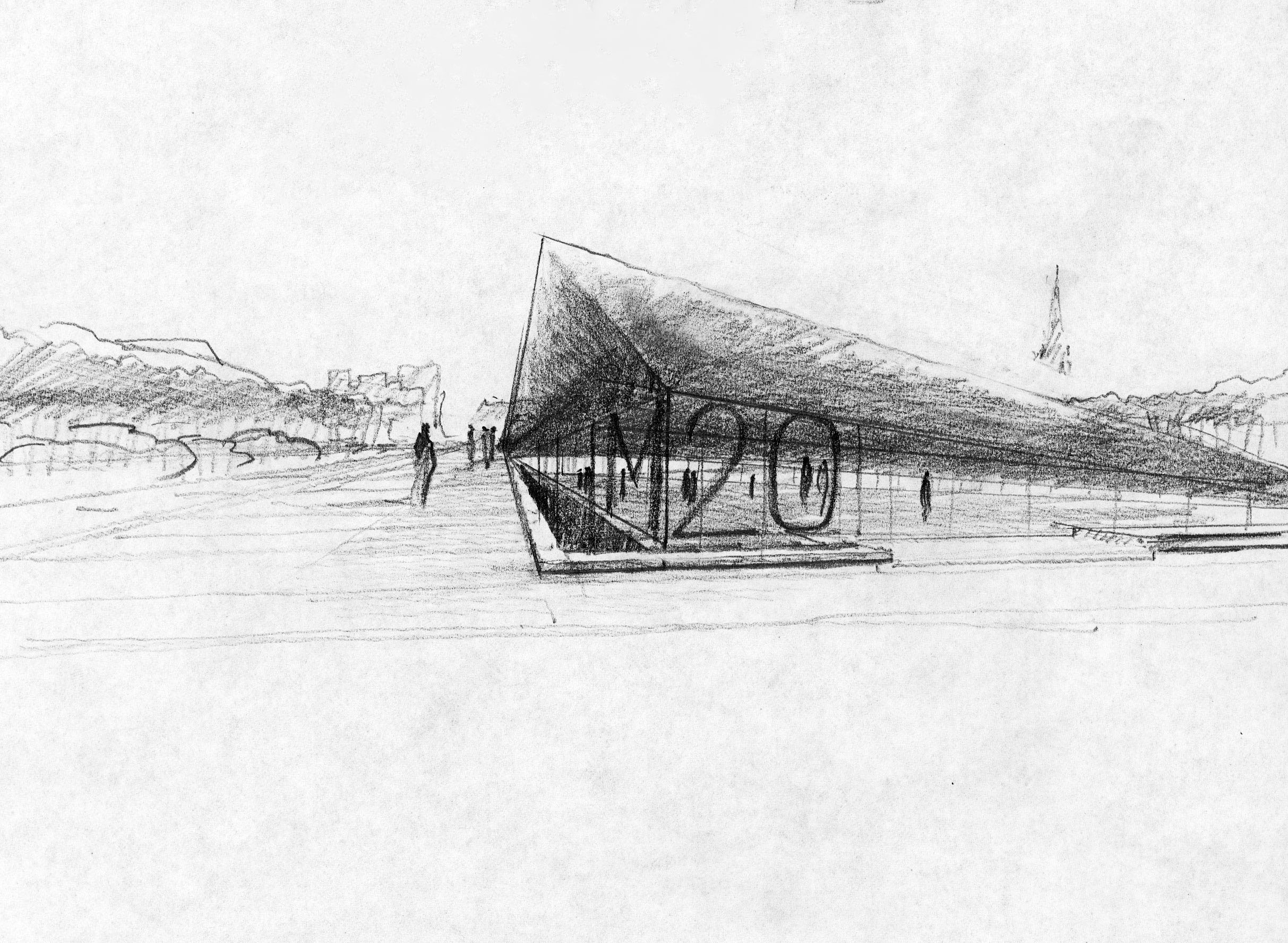
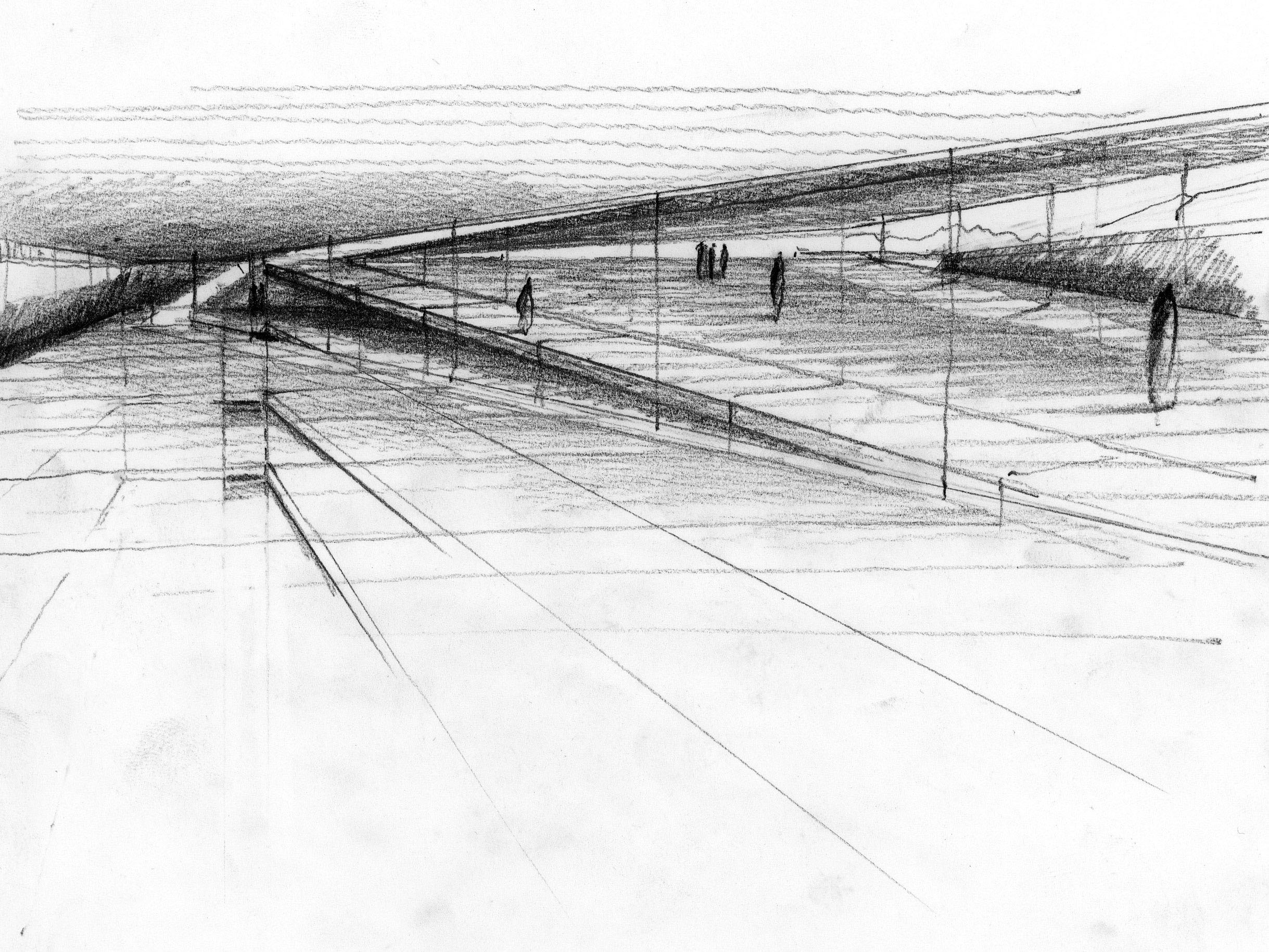
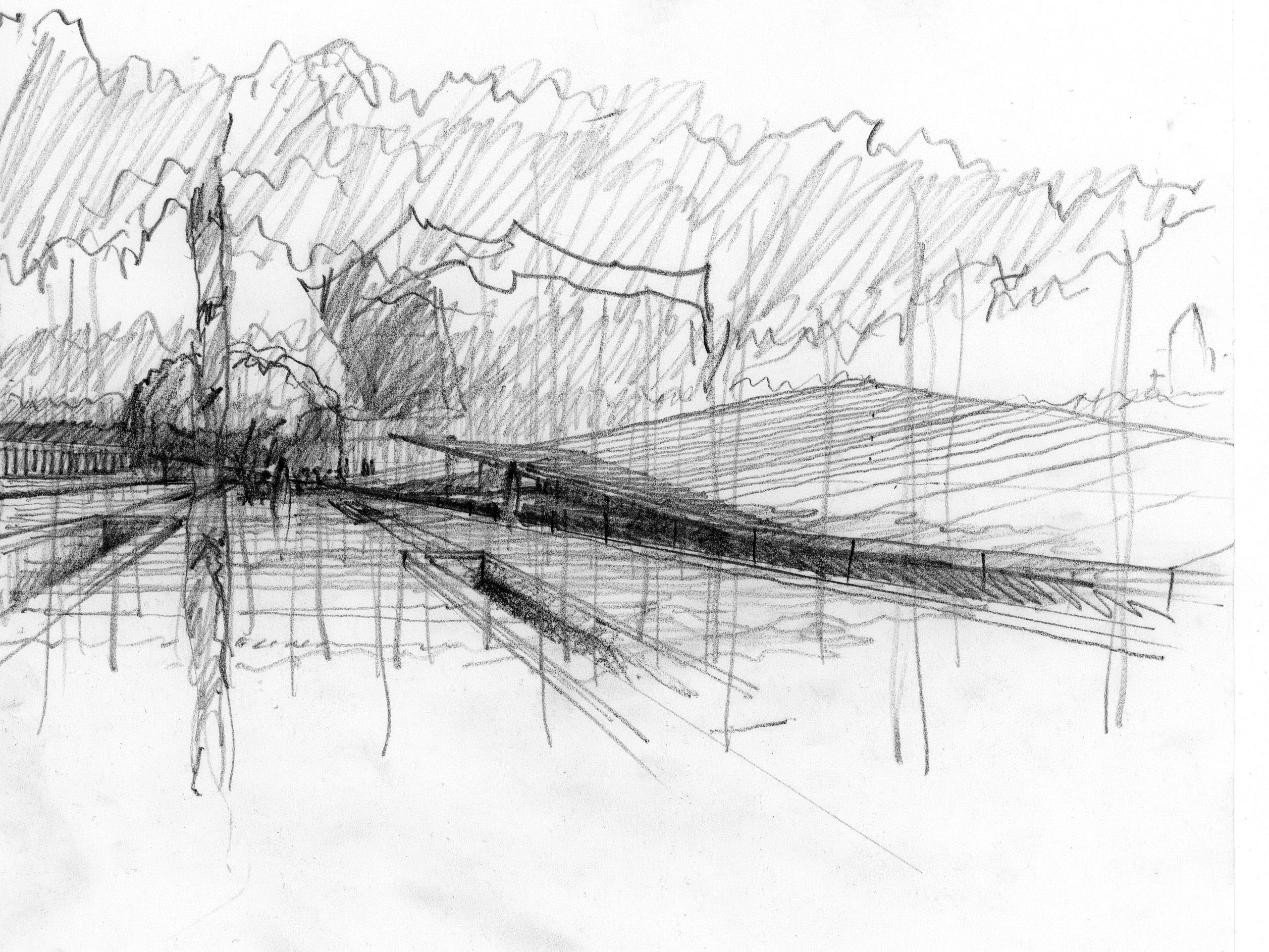
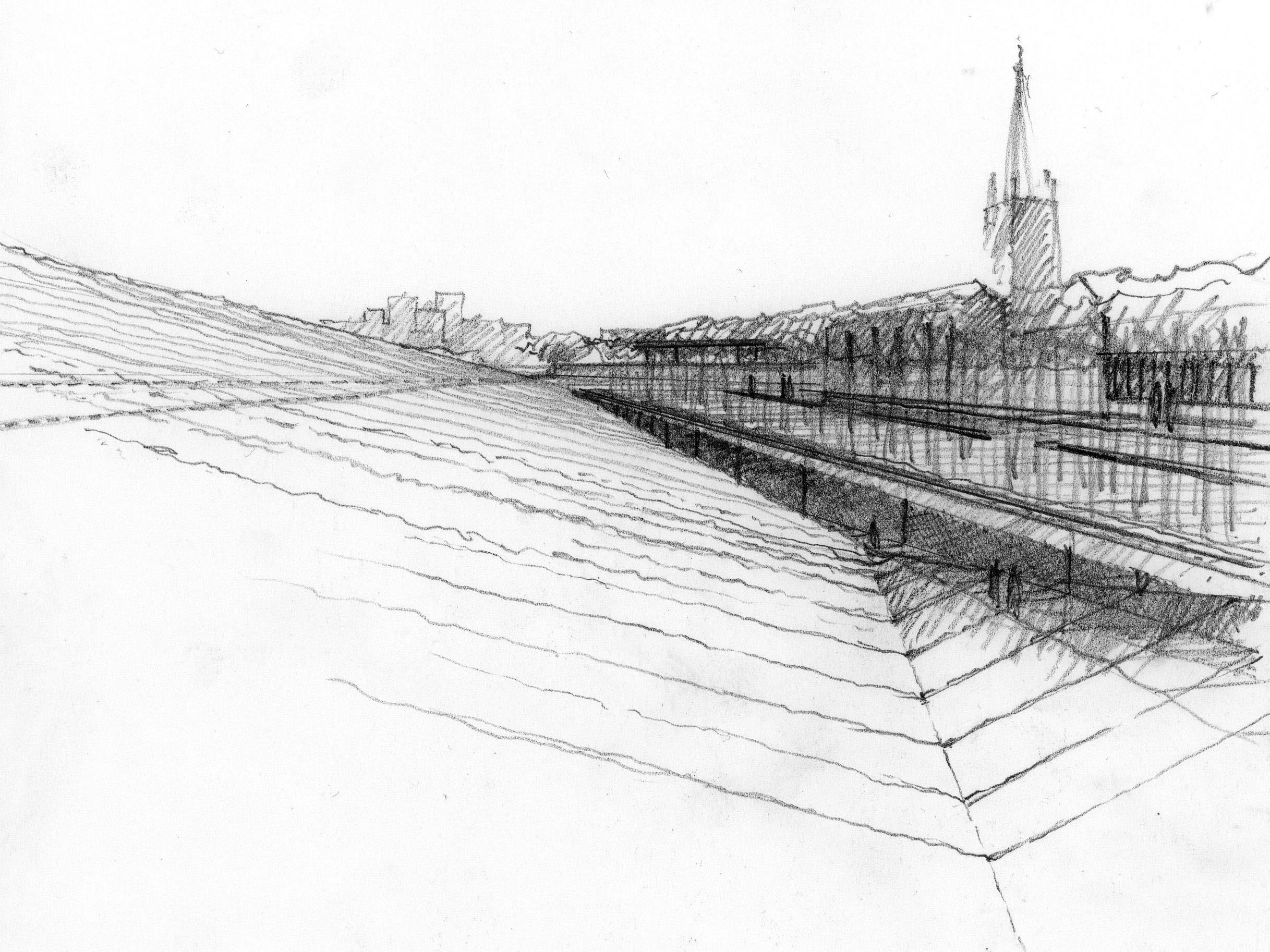
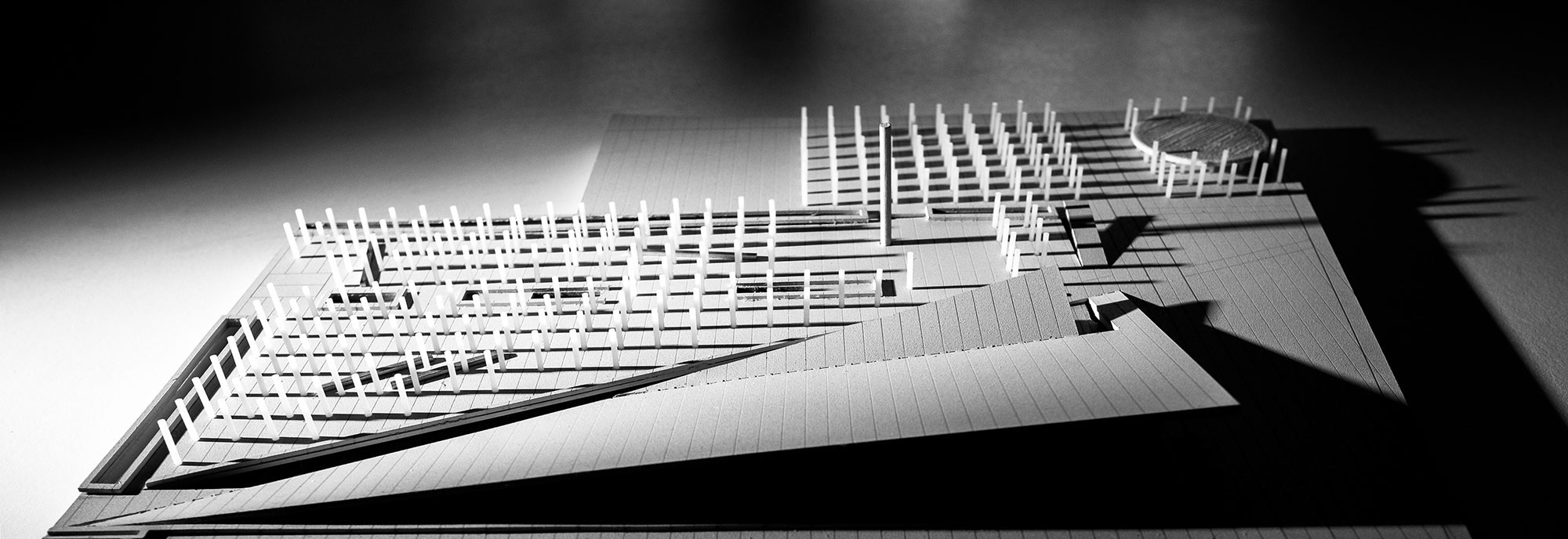
<
>
Hansjörg Göritz Studio - Works
Museum of the 20th Century
Berlin, Germany
2015
Forum Unfolded
Ideals of [urban] landscape and [cultural] forum only materialize in spatial coherence. The site, with its solitary buildings lacks a spatially unifying element. A generous space designing gesture would tie together scattered structural elements and give the district its own unique big picture characteristic. Round off, cleaned up and cleared out, the patchwork of fragments becomes a palimpsest. A continuous forum surface turns into a canvas between, with and for all solitaires, including Potsdamer Strasse. In the center of orthogonal and polygonal urban edges - from the Tiergarten park to the canal - no additional monolith should occupy such possible integrity. Consequently this gained urban space expands over an upfolded roof and flows into its foyer, and down onto the interior continuous ramped landscape into the depths of his own identity of a museum with artificial light and daylight wells. This promenade architecturale becomes a forum - within the forum. Amidst this focus reconsidered arise connections such as from an urban loggia to and between the components of this multi-layered collage. Surrounded by neo-romanesque classicism and rationalist as well as expressive modernism, this museum will form an independent component representing a new century. Embedded within, it carries the potential for becoming a unique place in the spatial flow of this new overall composition of a clarified forum.
Urban Integration and Exterior Spaces
Restraint may be of the strongest presence. In the context and center of this overarching spatial clarification, harmonization and framing the edges of this museum redefine urban spaces as the sculptural up-folded roof above a down-folded plinth: the long cathetus to present the light glass foyer alongside Potsdamer Strasse and the Federal Library; the short cathetus opens the lightweight roof to the access roads on Scharoun Platz, to polygonal Kammermusiksaal, Philharmonie and Tiergarten. The respectfully distanced folding on the hypotenuse spans as a long diagonal to the pristine, protected space, and at the same time opens it to all objects; - the New National Gallery, St Matthew, the sycamore landmark, the urban grove with its visitor center, restaurant, and potential sculptures in this part of the forum. Here the museum seperates this space as a first sequence of a western enfilade towards the Tiergarten from that of an eastern enfilade to Potsdamer Platz. Though purposely reduced to this essence, the longitudinal presence of the actual claim, the submerged museum plinth nonetheless registers from light wells in the continuous forum and Berlin's urban grove. Mies' module continues as the historic pixel size for this new image.
Spatial Concept, Interior Spaces, Sequencing, Light
Underneath this elementary unfolding of the forum, the Museum of the 20th Century unfolds as a continuous path of emersion and embarkment. Under the forum plinth the galleries of artificial light fold down and expand into the depth, directed and generously oriented between the zenithal light wells at Mies' plinth, the ramp slot on the diagonal, and the museum foyer on Scharoun Platz and Potsdamer Boulevard. The infinite ramp instigates an art experience upon entering the transparent foyer with its activities. Subsequent sequences and visual connections of the long galleries will be thematically subdivided. Special rooms and islands at the light patios are points for concentration in this spatial flow. In the midst of all neccessities for artificial lighting, spaces and wall space, places selectively are created that are open to zenithal natural light; this is also true for the servant side wing, connected at both ends of the ramp, with a clerestory along its entirety [similar to the studios and offices beneath Kahn's Kimbell Art Museum]. Exposed materiality of the finest white cast stone for the roof, and almost frameless glass filigree infills will contrast with the forum pavement on the roof and in the foyer.
Landscape Design Integration
Adjacent to the English garden character of the Tiergarten this forum defines an independent identity and a modern urban spatial experience. A comb of hedges articulates the transition into the new forum. Based upon to the spatial urbanistic idea, the new cleared space stages a cohesive backdrop, a spatial urban landscape - in line with the original Valentien plan - supplements the solitary buildings and the museum in the form of a generous comprehensive urban grove. With its vertical 4.80 m staccato of slender bright birch trunks and the bright, filigree roof, it forms the poetic framework for a new Kulturforum. With the seasons it lends the district its impressive identity - pleasant shimmering green in the summer months and light sculptural branches in winter [almost in a kind of large Paley Park]. With its flow, this green roof ties the district. At the same time, major vehicular connections remain intact. In the long term adjacent infrastructures are to be covered with uniform materials. Existing installations are retained to a large extent and are only cautiously integrated. In this composition, the precious sycamore in the district's center is included as a single vegetative attraction. As an island in this birch tree arbor, the roof of the museum building emerges. Potentially accessible, its elevated plane stands out as an emerging clearing from the grove. From up here one could enjoy the view over the forum, across the 'sea of green' towards the monumental solitaires.